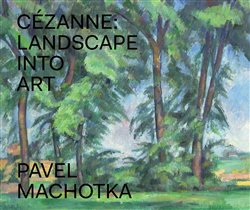Menu
košík
0
/
Knihy/
Populárně naučná pro dospělé/
Umění/
Všeobecné a ostatní/
Machotka, Pavel - Cézanne: Landscape into Art
Machotka, Pavel - Cézanne: Landscape into Art
0% (0 hodnocení)
Jazyk: anglicky
Počet stran: 224
Vazba / Podoba: vázaná
Nakladatelství: Arbor vitae
Rok vydání: 2014
Počet stran: 224
Vazba / Podoba: vázaná
Nakladatelství: Arbor vitae
Rok vydání: 2014
396 Kč
Skladem
ks
| katalogové číslo: | K196476 |
| EAN: | 9788074670497 |
| e-shop: | |
| Vydavatel: | Arbor vitae |
| cena bez DPH: | 396 Kč |
| cena vč. DPH: | 396 Kč |
popis
parametry
soubory a odkazy
The book of the world known scholar on Cézanne's work, Pavel Machotka, throws a new light on the momentous work of Paul Cézanne. He is often viewed merely from his place in history - as a forerunner of the Cubists, or more simply as the father of modern art. Seldom is he seen as a painter who painted in his own time, in a particular place, and with his own goals and desires. Pavel Machotka prefers to see Cézanne as a painter at work, as someone who both looked hard and thought deeply and analytically. He located and photographed dozens of the motifs that Cézanne had painted, and here he analyzes the artist's creative process in transforming the landscape into painting. He shows that Cézanne was both intensely attached to his vision and deeply committed to constructing a disciplined and sensuous analog of it. On the one hand his paintings are representations of what he saw, and on the other they are independent constructions of nearly musical intricacy.
| Jazyk | anglicky |
|---|---|
| Rok vydání | 2014 |
| Autor | Machotka, Pavel |
| Vazba / Podoba | vázaná |
Diskuze je prázdná.
přidat příspěvek do diskuze
Internetový obchod BANSHIES s. r. o.
E-shop system: E-commerce PRO 4.0 © 2025 GlobeWeb Czech s.r.o. | Mapa webu


